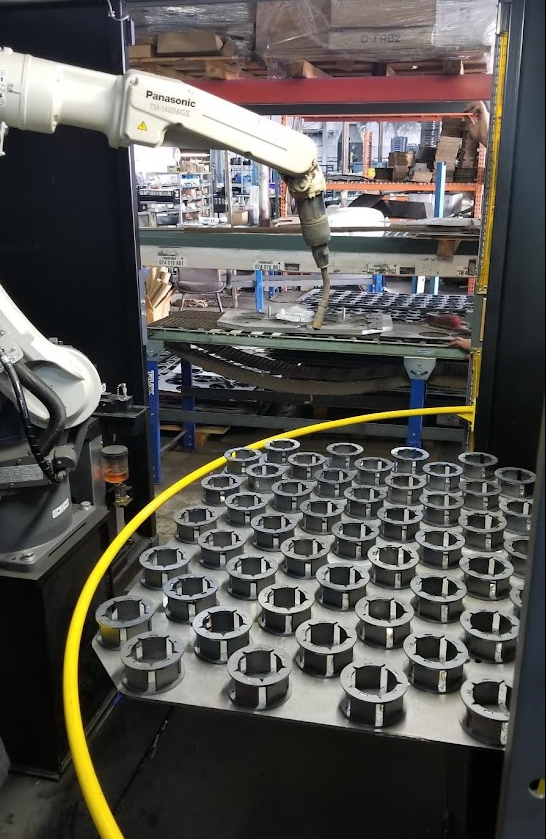Introduction
Over the past few decades, the offshoring of manufacturing jobs from the United States to lower-cost countries has been a significant trend. However, recent years have witnessed a resurgence of interest in bringing manufacturing back to the U.S., a phenomenon known as onshoring or reshoring. This movement is driven by various factors, including changing global economic conditions, advances in automation and robotics, and a growing consumer preference for “Made in America” products. In this article, we will delve into the onshoring trend, explore the role of automation and robots in modern manufacturing, and discuss the implications of this shift for the American economy.
Onshoring Trends
There are several reasons behind the increasing trend of onshoring manufacturing operations in the United States:
Rising labor costs in traditionally low-cost countries: As wages in countries like China and Mexico continue to rise, the cost advantage of offshoring diminishes. This shift encourages companies to reevaluate their manufacturing strategies and consider relocating operations to the U.S., where labor productivity is generally higher.
Supply chain disruptions: The COVID-19 pandemic exposed the vulnerabilities of global supply chains, causing many businesses to experience delays and disruptions. As a result, companies are now seeking to shorten their supply chains and gain more control by bringing production closer to home.
Increasing focus on quality and innovation: Companies are finding that manufacturing in the U.S. allows for better control over quality, as well as increased opportunities for collaboration and innovation. This can lead to the development of higher-value products that can better compete in global markets.
Government incentives: Federal, state, and local governments in the U.S. are offering various incentives to attract manufacturing investment. These can include tax breaks, grants, and other financial support, making it more attractive for businesses to invest in domestic production.
Consumer preferences: The “Made in America” label carries significant weight for many consumers, who associate it with quality, craftsmanship, and support for local jobs. As demand for American-made products grows, companies are increasingly motivated to shift production back to the U.S.
Automation and Robots in American Manufacturing
As companies consider onshoring their manufacturing operations, many are turning to automation and robotics to help offset the higher labor costs in the U.S. compared to other countries. These technologies offer several advantages:
Increased efficiency: Automated machinery and robots can operate at a consistently high level of efficiency, reducing production times and minimizing waste. This improved productivity can help offset the higher labor costs associated with domestic manufacturing.
Enhanced precision and quality: Automation and robotics allow for greater precision and consistency in production processes, leading to higher-quality products that can compete more effectively in global markets.

Flexibility: Automated production lines can be easily reconfigured to accommodate changes in product design or shifts in demand. This flexibility enables manufacturers to respond more rapidly to market trends and customer needs.
Improved working conditions: Robots can take over repetitive, physically demanding, or hazardous tasks, allowing human workers to focus on more skilled, higher-value activities. This shift can lead to safer, more satisfying work environments and help attract and retain skilled labor.
Lowering the total cost of ownership: While the initial investment in automation and robotics can be significant, the long-term benefits can outweigh these costs. Savings from increased efficiency, reduced waste, and improved quality can lead to a lower total cost of ownership for domestically-produced goods, making them more competitive in the marketplace.
Implications for the American Economy
The onshoring trend, along with the increased adoption of automation and robotics, has several implications for the American economy:
Job creation: Although automation and robots can displace some jobs, they also havethe potential to create new ones. These new positions often require higher levels of skill and offer better wages, contributing to an overall improvement in the quality of jobs available. Moreover, the return of manufacturing operations to the U.S. can create additional jobs in areas such as logistics, sales, and customer service.
Economic growth: As more companies invest in domestic manufacturing, the economy is likely to benefit from increased capital investment, higher levels of innovation, and a more robust manufacturing sector. This growth can lead to greater overall economic stability and resilience in the face of global disruptions.
Strengthening the manufacturing ecosystem: The resurgence of American manufacturing can help revitalize the entire manufacturing ecosystem, including suppliers, service providers, and educational institutions. This revitalization can create a positive feedback loop, encouraging further investment and innovation in the sector.
Enhanced global competitiveness: By focusing on quality, innovation, and the efficient use of automation and robotics, American manufacturers can develop and produce products that are competitive in global markets. This competitiveness can help to drive exports, increase market share, and create a more favorable trade balance.
Encouraging innovation: The increased focus on domestic manufacturing and the adoption of advanced technologies can help to spur innovation across various industries. As companies invest in research and development, new products, processes, and business models can emerge, contributing to the overall competitiveness and growth of the American economy.
Environmental benefits: By using advanced manufacturing techniques, companies can reduce waste, minimize energy consumption, and limit their environmental impact. This shift towards more sustainable manufacturing practices can contribute to a cleaner, healthier environment for all.
Conclusion
The trend of onshoring manufacturing operations, coupled with the increasing use of automation and robotics, represents a significant shift in the American manufacturing landscape. As companies invest in domestic production, they can reap the benefits of increased control over quality and supply chains, capitalize on consumer preferences for American-made products, and contribute to the revitalization of the U.S. economy.
While the initial investment in automation and robotics may be substantial, the long-term benefits of increased efficiency, enhanced precision, and improved working conditions can more than offset these costs. By embracing advanced manufacturing techniques and focusing on innovation, American manufacturers can compete successfully in the global market, driving economic growth and fostering a more robust and resilient manufacturing sector.
Sales@traxda.com 888-660-5892